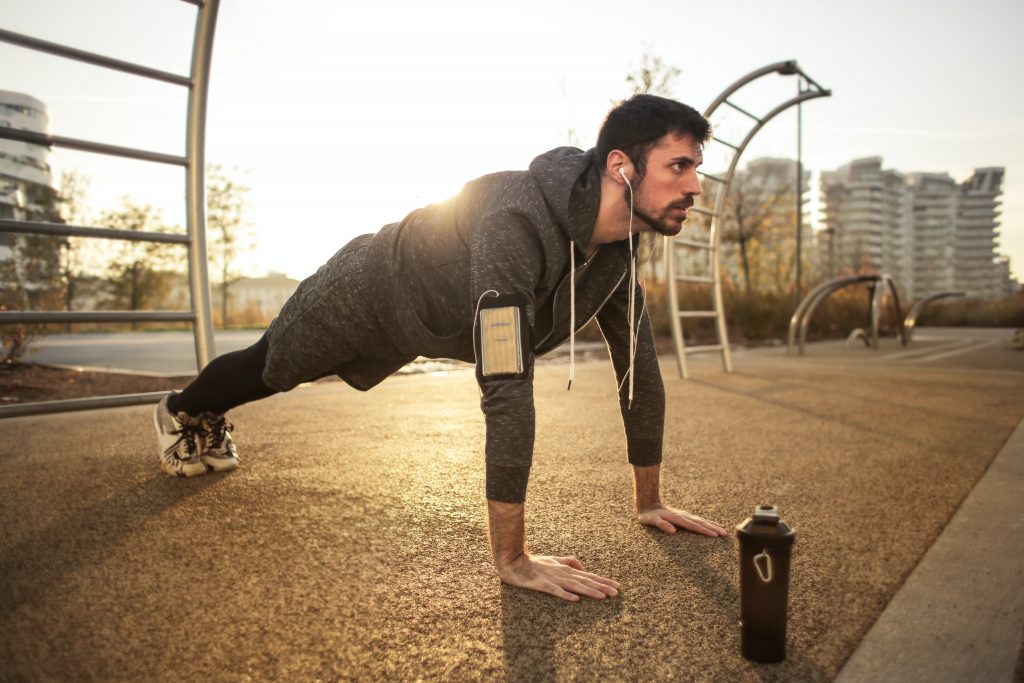
April 30, 2020, by Charlotte Gauja
How to Listen to Your Own Body
The health and fitness industry has created a lot of noise since the social distancing rules were put in place. Sometimes the noise showcases quick-fixes, high standards and unrealistic results. But, how often do we ignore the noise and simply listen to our own bodies?
Living in a culture where we can order nearly anything to our door, it’s not surprising to see the lack of patience in our lives. In fitness specifically, this trend has manifested itself as an illusion of consequence: ‘do this thing and you’ll get quick results because someone else [possibly] did it.’
Why you should listen to your body?
Setting and working towards specific goals is going to be different for every individual. Each of us has a distinct environment, genetic makeup, activity preferences and so on. Therefore, outwardly comparing ourselves to others is an unhelpful exercise. Instead, we should listen internally for our own personal health and fitness journey. Aim’s should be to reach our individual potential, rather than aspiring to someone else’s standards. You may still find inspiration and motivation by the achievements and ambitions of others, however inspiration differs from replication.
What is listening to your own body? Broadly speaking, it can be having a realistic sense of self-awareness of your experience, your current capabilities and how you can maximise your potential in the future.
How Can I Get There?
Listening to your own body
This should be a personal journey and one that doesn’t just focus on the destination. Introducing small steps to reach a long-term goal can be as, exciting and rewarding that the destination itself. We would recommend breaking down realistic, time-bound and achievable shorter-term goals can be useful practice.
Take ownership of your health
While friends, family, coaches and role models can be hugely influential, your physical and mental wellness is enhanced with you in control. Focus internally and ask challenging questions to yourself such as, ‘do I actually enjoy this?’, ‘is this suited to me?’, ‘is that exercise painful?’, and, ‘is this helping me reach my potential?’, and continue to remind yourself of the benefits that taking command over your own wellbeing brings.
Identifying your limitations
When you might need support can be important. Knowing what areas, you can improve on is a sign of strength, not weakness and it is essential to tackling them head on. Sharing thoughts and ideas with your support network and fitness professionals shouldn’t take any ownership away from you; it demonstrates a desire to improve yourself and can offer insights you may not have yet considered.
Be active in your consumption of health and fitness content
Not everything you read, hear and watch will be true or relevant for you and always prioritise your wellbeing. Find resources that really resonate and speak to you, your experience, and the personal journey you are on.
Why Bother?
Persistence pays off. Whether it is achieving your first pull-up, running your personal best time or feeling happier; the focus you put into your journey will make the experience all the more rewarding.
The traits that you will develop during the process can also extend to benefit other areas of life. Knowing you are capable of pushing your limits, can improve your perseverance in work, hobbies and interests, particularly when faced with challenge.
Putting It All Into Practice
To provide evidence that this method works, Fitness Instructor, Bharat shared his personal experience as an example:
“2-3 years ago I was generally on top of my sport and fitness training. I was injury-free, playing basketball, korfball and volleyball multiple times per week, coaching group exercise classes and had a consistent resistance training plan in the gym. I enjoyed it and saw progression in what I was doing because my goals and motivations were clear. The exception was upper body training. I didn’t enjoy pushing and pulling weights, but I carried on because I didn’t want an imbalance in muscles.
It wasn’t until I found inspiration through functional TRX suspension training and calisthenics (gymnastics-inspired bodyweight exercise) that I began to question my motives on upper body days, and almost immediately evolved the way I moved. Why I was throwing weights around when I didn’t enjoy it and wondering why my training consistently plateaued. I began following online educational calisthenics channels on YouTube and instantly engaged with the coaching philosophy. Here, I rediscovered that manipulating my own bodyweight and movement reminded me why I love exercising. It allows me to express and challenge myself in new ways, both mentally and physically.
Shifting my attention to bodyweight and functional movements has given my training a greater purpose. This has consequently helped shape my own personal discipline, motivation and coaching style. My goals changed to handstands and pull-up variations which enabled me to own my training. I achieved this by setting realistic yet ambitious short-term goals (2-4 weeks). That helped me get to the long-term goals (4-6 months). I owe that to taking a step back, listening to myself and pursuing a path more compatible to me.”
We hope this blog has inspired you to internalise your approach to exercise. Take things at your own tempo, and you may develop your own style of training.
If you would like any further discussion or have any questions, please don’t hesitate to get in touch with Bharat at Bharat.Samra@nottingham.ac.uk
To view a range of fitness sessions delivered by University of Nottingham Sport be sure to visit our Health and Wellbeing Home: https://www.nottingham.ac.uk/sport/health-and-wellbeing-home.aspx
No comments yet, fill out a comment to be the first

Leave a Reply